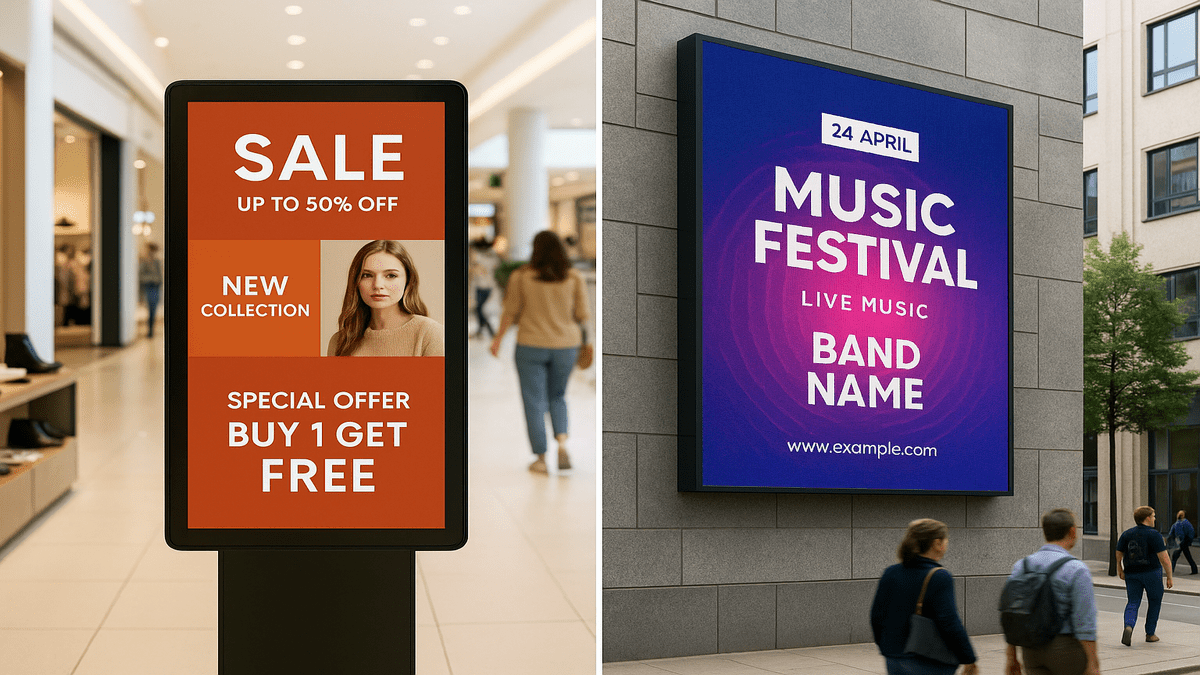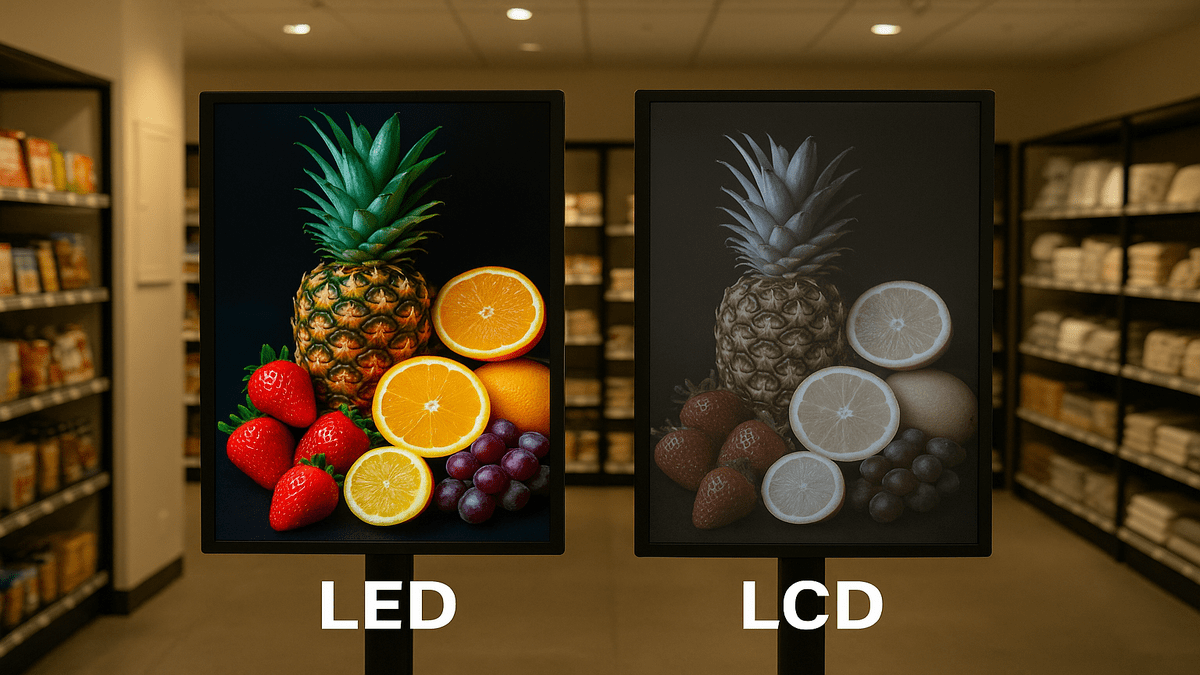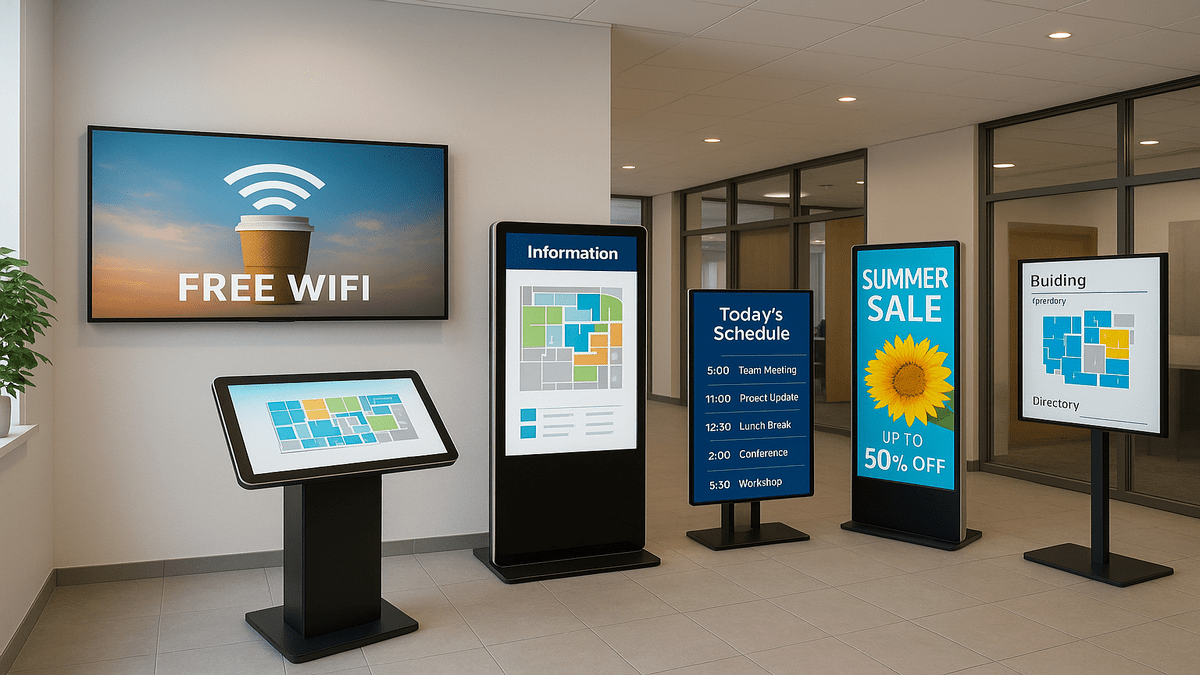In an era dominated by visual engagement, businesses, educational institutions, healthcare providers, and public services are turning toward digital signage displays to communicate, advertise, and inform. Among the multitude of options available in the market today, choosing the best size and type of digital signage display can be a daunting task. From understanding display technology to evaluating location and content needs, the right decision plays a pivotal role in maximizing return on investment and viewer engagement.
This comprehensive guide offers expert insight and key tips for choosing the best size and type of digital signage display, ensuring that your organization invests wisely and effectively.
Understanding the Importance of Digital Signage Displays
Before delving into size and type, it’s crucial to grasp the fundamental importance of digital signage displays in today’s marketing and communication landscape. These displays serve as dynamic visual platforms to display content such as videos, announcements, advertisements, or interactive elements. Compared to traditional static signs, they provide greater flexibility, real-time updates, and improved audience targeting.
Businesses often use solutions like LED video wall installations in retail stores and shopping malls to create immersive and large-format visual impact. However, without a well-informed selection process, even the most advanced displays may fail to deliver expected outcomes.
1. Assess Your Space and Location Requirements
 The first step in choosing the best size and type of digital signage display is evaluating the physical environment where the display will be installed. Is the signage going indoors or outdoors? Is the viewing distance short or long? Is the area well-lit, dim, or affected by sunlight?
The first step in choosing the best size and type of digital signage display is evaluating the physical environment where the display will be installed. Is the signage going indoors or outdoors? Is the viewing distance short or long? Is the area well-lit, dim, or affected by sunlight?
For Outdoor LED screen usage, brightness levels, weatherproofing, and screen durability become critical. In contrast, indoor displays require considerations for resolution, glare reduction, and ambient lighting compatibility.
Digital Signage Size must be proportional to the space available. A screen too small can be ineffective in grabbing attention, while a screen too large may overwhelm the viewer or even violate local zoning regulations.
2. Know Your Audience and Content Strategy
The nature of your audience and the type of content you plan to display greatly affect the size and type of screen you need. High-traffic environments such as airports, stadiums, and large retail spaces benefit from large-format screens with eye-catching visuals and high contrast ratios.
Interactive screens, often smaller but equipped with touch capability, are ideal for kiosks, wayfinding in malls, and digital menus in restaurants.
When choosing the best size and type of digital signage display, always align the display type with the intended content delivery. For instance:
- HD or 4K content needs a high-resolution screen.
- Continuous video streaming requires screens with high refresh rates.
- Text-heavy information may need portrait-oriented screens for better readability.
3. Consider Display Resolution and Pixel Pitch
When selecting a display, resolution and pixel pitch—the distance between the center of one pixel to another—are essential technical specs. A smaller pixel pitch means better image quality and is ideal for closer viewing distances.
For indoor locations where viewers are within 3–10 feet of the screen, go for high-resolution displays with fine pixel pitches. However, in outdoor or large venue settings, a slightly larger pitch may suffice without compromising visual quality.
This is especially important for those investing in The best type of digital signage display, where clarity, brightness, and color accuracy all play critical roles.
- 4. Prioritize Brightness and Contrast Ratio
The effectiveness of a digital display heavily depends on its visibility, particularly under variable lighting conditions. Brightness is measured in nits, and a good benchmark is:
- Indoor Displays: 300–500 nits
- Bright Indoor/Window-Facing Displays: 700–2,500 nits
- Outdoor Displays: 2,500+ nits
Contrast ratio further enhances legibility, particularly in environments with ambient light. Choosing a display with adaptive brightness or ambient light sensors can greatly enhance viewing experience.
These elements are key when choosing the best size and type of digital signage display, particularly in areas with fluctuating lighting conditions.
5. Decide Between LED vs. LCD Technology
 One of the core decisions in display selection is whether to go for an LCD or LED screen.
One of the core decisions in display selection is whether to go for an LCD or LED screen.
- LCD Displays are more budget-friendly and ideal for indoor use.
- LED Displays (including fine-pitch LED) offer brighter images and are scalable to very large sizes without visible bezels.
In large-scale installations such as conference centers or event venues, an LED video wall is often the most powerful and flexible solution. Not only does it offer seamless visuals, but it also allows for unique configurations and immersive displays.
When it comes to The best type of digital signage display, LED solutions frequently take the lead in delivering unmatched visual impact.
6. Evaluate Connectivity and Integration Features
Modern signage systems are more than just screens—they’re connected digital platforms. When selecting a display, ensure it supports a wide range of inputs (HDMI, DisplayPort, USB-C) and integrates seamlessly with your content management system (CMS).
Look for options with wireless content delivery, remote management, and compatibility with third-party software. For enterprise deployments, features like screen synchronization, multi-zone playback, and real-time data integration can dramatically enhance operational efficiency.
These digital integrations reinforce the value of choosing the best size and type of digital signage display that not only looks good but functions well within your technical ecosystem.
7. Energy Efficiency and Longevity
Sustainability is becoming increasingly important in tech purchasing decisions. When selecting a digital display, consider the following:
- Power consumption and Energy Star ratings
- Expected lifespan (measured in hours of operation)
- Warranty and support services
High-quality digital signage solutions often operate continuously for 50,000 to 100,000 hours, making the long-term operational cost a critical factor.
In spaces like public transport terminals, shopping centers, or hospitals, choosing energy-efficient displays not only reduces environmental impact but also leads to substantial cost savings over time.
8. Installation and Maintenance
Some displays require professional installation, particularly larger models or those mounted in unconventional places (e.g., ceilings, poles, or curved walls). Ensure the mounting solution is compatible with your screen size and type.
Additionally, factor in access for maintenance, screen cleaning, software updates, and potential repairs. Displays with front access panels or remote diagnostics reduce downtime and maintenance complexity.
If you’re wondering What are digital signage displays, they’re more than just screens—they’re sophisticated systems that need strategic support and regular updates to function optimally.
9. Budgeting for Total Cost of Ownership (TCO)
Don’t just look at the sticker price when evaluating options. Consider all costs associated with ownership, including:
- Initial purchase
- Installation
- Content creation and licensing
- Connectivity and hosting fees
- Maintenance and updates
This holistic view ensures that you’re not just choosing the best size and type of digital signage display, but also making a financially responsible decision.
10. Scalability and Future-Proofing
Technology evolves rapidly. Opt for displays that are modular, upgradeable, and capable of adapting to future needs. Scalability is essential for expanding display networks across multiple locations or integrating with new software tools.
Whether you’re a growing retail brand or a university campus expanding digital communication infrastructure, scalability ensures that today’s investment remains relevant tomorrow.
As your organization grows, so will your content needs, screen locations, and data integration capabilities. Future-ready displays allow you to expand without replacing entire systems.
Conclusion
Ultimately, choosing the best size and type of digital signage display requires careful evaluation of multiple factors—physical space, viewer engagement, content type, display technology, and budget. By following the key tips outlined in this article, you’ll be well-positioned to make a confident and strategic choice.
Investing in the right Digital Signage Size and The best type of digital signage display ensures better ROI, enhanced user experience, and long-term operational benefits. Whether it’s a single Outdoor LED screen or a full-scale interactive network, digital signage remains a powerful tool for communication in the digital age.




